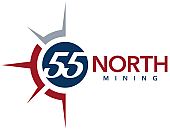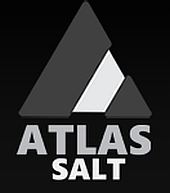 Lomiko Metals – Putting a Value on Critical Minerals Mining Projects
Lomiko Metals – Putting a Value on Critical Minerals Mining Projects

By Vince Osbourne, CFO, Lomiko Metals Inc.
The demand for critical minerals is growing every day as the push towards renewable sources of energy and a greener economy call for more and more materials essential to green technologies, such as lithium and graphite.
The demand has led to the proliferation of critical minerals mining projects in development in North America, and Lomiko is committed to being an important part of the supply chain for these minerals by advancing our graphite and lithium projects in Quebec.
As Lomiko’s CFO, part of my job is to assess the value of mining projects in development to determine their potential for shareholders. A number of key factors that will have an influence on expected cash flows must be carefully considered in calculating the valuation of each project. This article outlines those key factors of critical mineral project valuation and provides some examples to help illustrate how this process works.
Estimate of Mineral Resources and Mineral Reserves
The resource estimate for the deposit is one of the primary considerations. In Canada, mineral resource estimates must be prepared by trained Qualified Persons or QPs which could be either geologists or engineers, using norms and guidelines that are set out in the National Instrument (NI) 43-101 Standards of Disclosure for Mineral Projects. The estimate quantifies the amount of mineral resources for a particular deposit or property, classified as measured, indicated, or inferred. The value of the mineral resources depends on quantity, of course, but also factors such as the current price for the mineral or metal, which is driven by whether it is rare or abundant in nature, market conditions that determine supply and demand, and the degree of work and investment that will be required to extract the reserves and do any processing necessary to upgrade the mineral to a useful format that can be sold on the market.
There is an important difference between Mineral Resources and Mineral Reserves. Resources will become reserves only once sufficient engineering work has been done to confirm the economics of the deposit and the operating and economic parameters are developed in order to prepare a detailed mining plan. A mining plan and reserves are only declared at the pre-feasibility and feasibility (PFS or FS level). Mineral Reserves are declared as probable or possible based on the QP’s level of confidence, and only Measured and Indicated resources can be used to declare mineral reserves. Inferred Resources are too speculative in nature to be used in detailed mine planning, but could be used at the Preliminary Economic Assessment (PEA) level to evaluate the potential of the project.
Location
One of the most critical factors in valuing a mineral mining project is its location. This is because different sites offer different benefits and drawbacks to the project. For example, a project located near a large city may have access to a large labour pool, but there could be resistance to development in more populated areas. In contrast, a project located in a remote area may have fewer regulatory hurdles to overcome, but might incur additional costs associated with setting up remote camps and shipping the mined ore to the nearest port or processing facility.
Accessibility
Another vital aspect of mineral project valuation is accessibility to the necessary infrastructure. A mining project requiring access to water or power from distant sources may incur higher operating expenses than one located in an area that has these resources readily available. This can be particularly true if there are competing demands for those resources by other nearby projects and industries as well.
Government regulations around land use and environmental protection laws also play an important role in determining how easy it will be for companies looking into starting up new mines on any given piece of property. This is because they affect whether or not their operations can begin at all, depending on what kind of operations they plan on conducting there (e.g., strip mining versus underground drilling).
Social License to Operate
Unquestionably, the most important factor to always keep in mind is the company’s social license to operate – that is, an acceptance by the local communities of the planned mining operation. A mining project benefits not only company shareholders, but also local communities through job creation as a result of a need for accommodations, food, services, and equipment, and in some cases, profits to those living and working near the project. When finally in operation, there are many long-term economic benefits for the community and shareholders.
Obtaining a social license to operate requires a partnership approach from the earliest days of project development. It includes ensuring that exploration and mine planning is done in a way that protects the environment and places importance on site reclamation once mining has ceased, to ensure that the site is left in an environmentally pristine condition as when it was first explored. It is essential to receiving the necessary permits and regulatory approvals needed from government agencies to move forward with development.
At Lomiko, we put the importance of people above all else. We seek to become a partner of choice in Canadian critical minerals and are focused on working with the communities in which we operate to create value for all. To find out more about our projects, please visit lomiko.com.
































